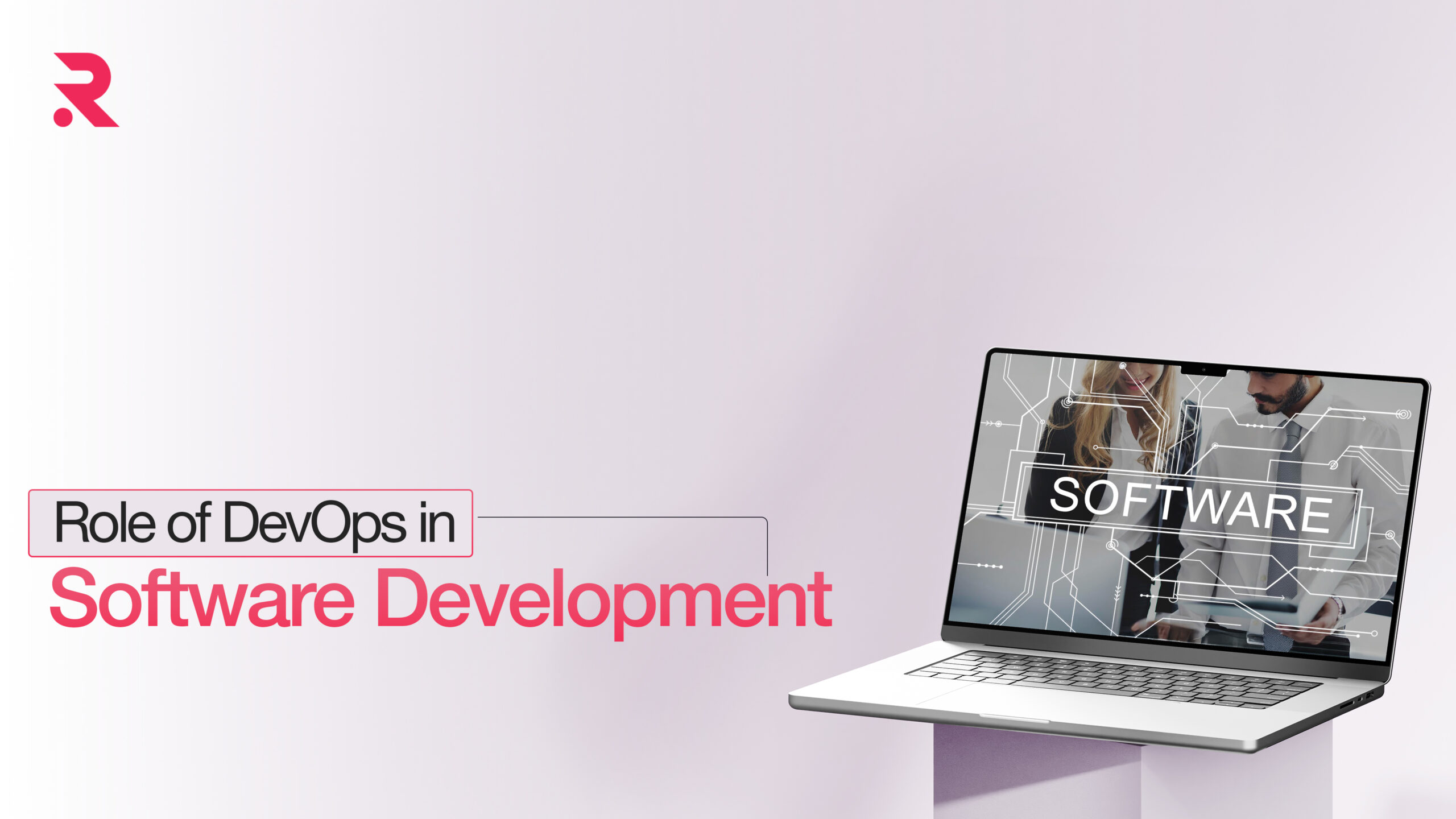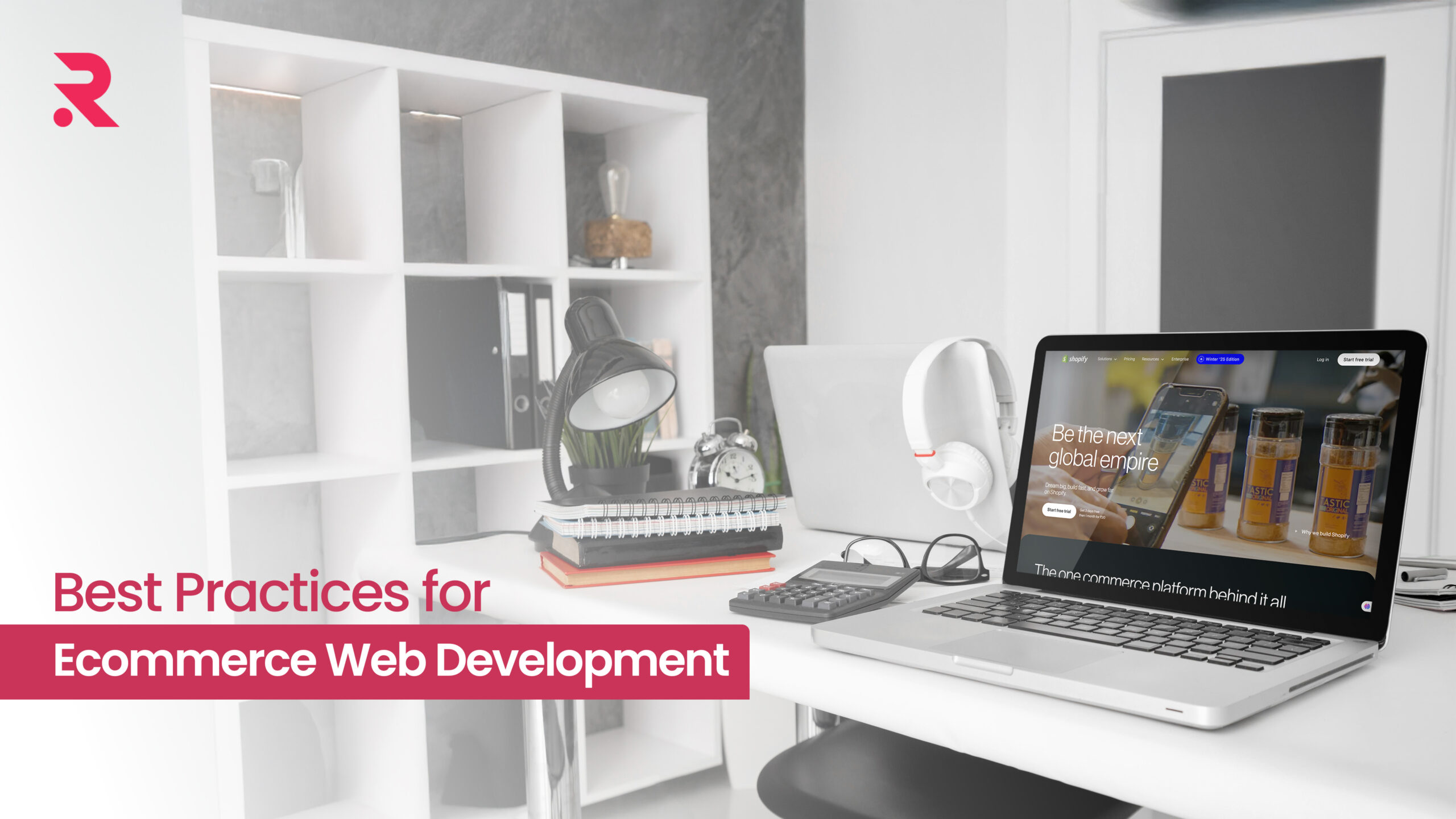MVP Development: How to Build Scalable Software with Minimum Investment?

In software development, it is important to understand how to build scalable software and create a Minimum Viable Product (MVP) that is inexpensive and scalable. This enables the startup or company to validate its ideas, gain early users, and set the stage for the business’s future growth without incurring heavy upfront investments.
Understanding MVP Development
An MVP is a Functional product version that ensures minimum essential features to satisfy the needs and requirements of early adopters. The core aim is to get it out quickly and at a low upfront cost, collect user feedback, and iterate based on real-world usage. This MVP approach allows testing assumptions, reducing risks, and ensuring optimum product-market fit.
Key Strategies for Building Scalable MVPs
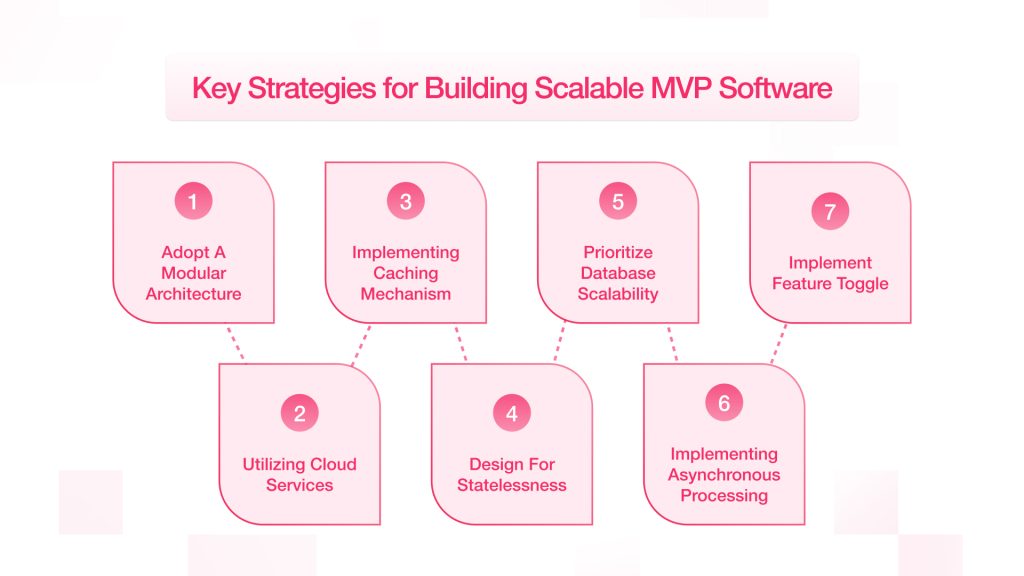
Adopt a Modular Architecture
Adopting a modular design, for example microservices, enables independent scaling of the different components of an application, which facilitates handling different loads in different core functionalities. For instance, an ecommerce site can scale the catalogue of products and user authentication services separately according to demand.
Utilize Cloud Services
Using cloud platforms like AWS, Google Cloud, or Azure comes with scalability with very little initial investment in infrastructure. These services equip themselves with auto-scaling features that allow resources to scale up or down with variations in traffic. Furthermore, cloud environments ensure faster deployment and help support continuous integration and delivery (CI/CD).
Implementing Caching Mechanism
Placing frequently accessed data in a cache will significantly reduce load on the database and improve response times. In-memory data storing tools like Redis or Memcached offer the fastest data possible for retrieval, resulting in a seamless user experience. It is essential to architect a caching strategy that strikes a balance between improved performance and maintaining data consistency.
Design For Statelessness
Stateless application development guarantees the independence of every request from former interactions. This kind of design enhances load balancing and fault tolerance since it enables any server to handle any request without relying on session information.
Prioritize Database Scalability
Choosing the appropriate database will affect growth. NoSQL databases such as MongoDB or Cassandra allow for horizontal scalability, wherein data is distributed among several servers. Such a setting is beneficial when the application expects rapid growth or when it has to deal with large volumes of unstructured data.
Incorporate Asynchronous Processing
Asynchronous processing allows the application to handle tasks like sending email notifications or image processing in the background without blocking user interactions. The combination of the message queue and worker system allows the application to remain responsive even during heavy load periods.
Implement Feature Toggle
Feature toggles offer developers some flexibility to enable or disable certain essential features without deploying new code. This helps them to test core features with an audience of their choice or withdraw additional features that are causing problems, all while preserving the integrity of the general system.
Need a Reliable Software Development partner to help grow your Business?
Our Experts Can Help!
Monetize and Optimize Performance
By conducting continuous monitoring of the performance of applications, bottlenecks in the application and areas(relevant) to be improved on can be found. Tools that measure indicators such as response rates, errors, and utilizations can show the behavior of systems towards guiding necessary improvement efforts directed at the application.
Real-World Examples
- Netflix: Moved from a monolithic architecture toward the microservices domain, thus allowing the scaling of video streaming and user recommendations independently to accommodate millions of users concurrently.
- Dropbox: Became able to provide the backend infrastructure to maintain the increasing user community through cloud services and optimizing storage solutions, all to perform at the utmost during peak usage.
- Twitter: The microservices architecture was transitioned due to increased traffic and the growing complexity of features, allowing improved development and scalability of distinct pieces.
Confused about selecting the right development partner? Here how you can select the right software development company for your business.
Post MVP development
Post MVP development, you should really turn your attention toward scaling the product in order to meet the expanding needs of users. Now is the time to put Continuous Integration/Continuous Deployment (CI/CD) pipelines in place so that new additional features and updates can be delivered as seamlessly and reliably as possible. This would also help maintain the quality of code while speeding up the Software development process.
Further, modular architecture will bring about possibilities where different components could be scaled independently without degrading the system’s performance in terms of load-handling capacity. Bringing cloud services in the equation with auto-scaling capabilities will make the system even more dynamic when it comes to different traffic demands.
Regular monitoring and performance testing should be performed to detect all possible bottlenecks within the system as well as possible enhancements. Implementing caching mechanisms, optimizing the database queries, and using content delivery networks (CDNs) would significantly improve application performance and scalability.
Scaling With Security in Mind
As your product development progresses from its MVP stage to one tailored for a competitive edge in the target market, consider how to develop software that is not only scalable but also legally compliant and secure. Many products die in later stages due to security oversights made early in the development process. MVPs, while actively minimalistic, shouldn’t put user data and production-compliant practices at risk.
Security Practices to Implement Early
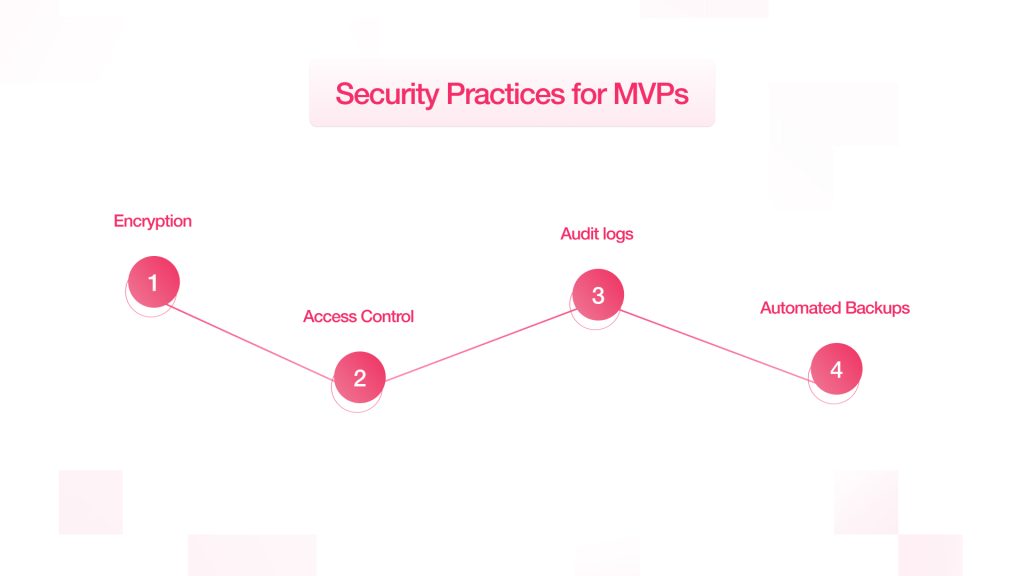
- Encryption: Sensitive information must be encrypted both while it is being transported and when it is stored. The most commonly used protocols are TLS and AES.
- Access Control: Role-based access control for services. Authentication and authorization with tools throughout the scope of OAuth, JWT, or Firebase Auth.
- Audit Logs: Detailed logs to include user actions, errors, and access to sensitive data. Justified mostly for debugging or investigating incidents.
- Automated Backup: Databases and key systems need to be regularly backed up to prevent data loss and enable disaster recovery.
Depending on your industry and audience, some degree of compliance with regulations like GDPR, HIPAA, or PCI DSS might be needed. Even in MVP, minimal compliance practices go a long way toward saving you big bucks of rework later.
Team Composition for Scalable MVP Development
What goes into building an in-house team for your Minimum Viable Product is as important as how you write your code. Correct team structuring enhances efficiency and reduces miscommunication, all of which is important in situations where resources are limited.
Recommended MVP Team Structure
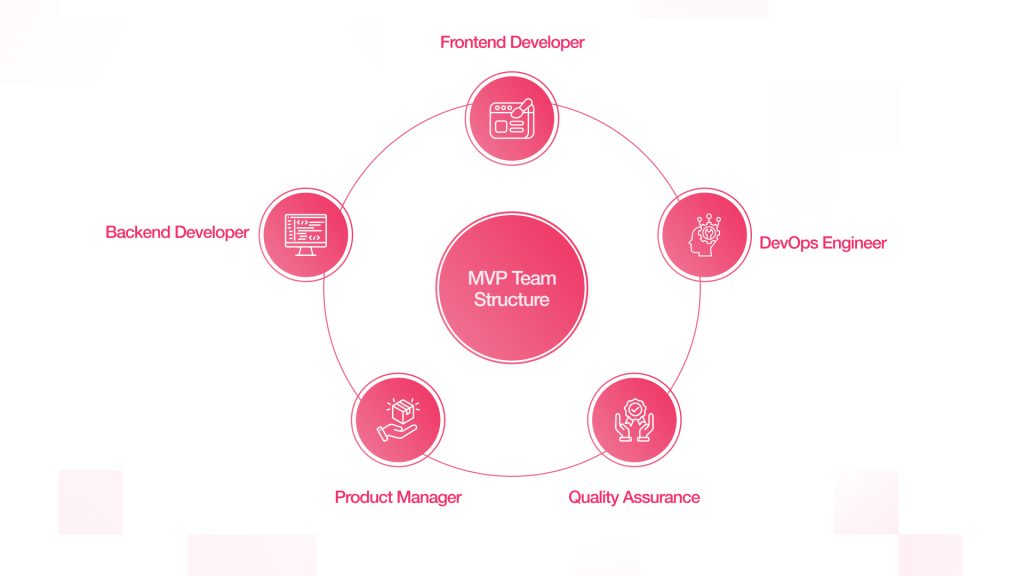
- Product Manager: Oversees the project scope, ensuring the Minimum Viable Product (MVP) meets the potential user needs and aligns business goals.
- Backend Developer(s): Responsible for API, Database, and Server-side logic.
- Frontend Developer(s): User interface creation and usability maintenance across devices.
- DevOps Engineer: Optional but recommended: Involves deployment, monitoring, and infrastructure scalability.
- QA: Testing is critical even in the early stages. It can be reduced by having a dedicated QA professional or automation testing setup to reduce the bugs at an early stage.
However, in tight budgets, it is possible to start with a two-or three-person team, but leveraging the outsourcing capability or hiring experienced freelancers in critical areas such as DevOps or security can have high payoffs.
Funding And Cost Control
Financial discipline is a vital part of building an M.V.P. (Minimum Viable Product) so scalability can be achieved at a minimum expense. You most definitely won’t have to skimp on quality, but the priorities in spending must be established.
Smart Cost-Saving Measures
- Open-Source Instruments: Rely on open-source tools like PostgreSQL, MySQL, and Docker. They are trustworthy and free, supplemented with robust community support.
- Free or Low-Price Cloud Schemes: Almost all cloud providers have generous free tiers. For instance, AWS Free Tier, Google Cloud Free Program, and Azure free accounts can sustain early development and testing.
- Serverless Functions: AWS Lambda, Google Cloud Functions, or Azure Functions can help you minimize your overheads while automatically scaling.
- No-Code/Low-Code Tools: For internal dashboards or admin panels, you may explore Retool or Bubble instead of building them from scratch.
Having a clear roadmap and tracking the KPIs such as cost-to-acquire customers (CAC), churn, or even user feedback will allow for better decision-making in anything from resource allocation next.
Iteration: From MVP to Full Product
Moving an MVP to a full product entail gaining traction. Quite typically, organic scales would give rise to technical debt and product sprawl.
Post MVP Development Checklist
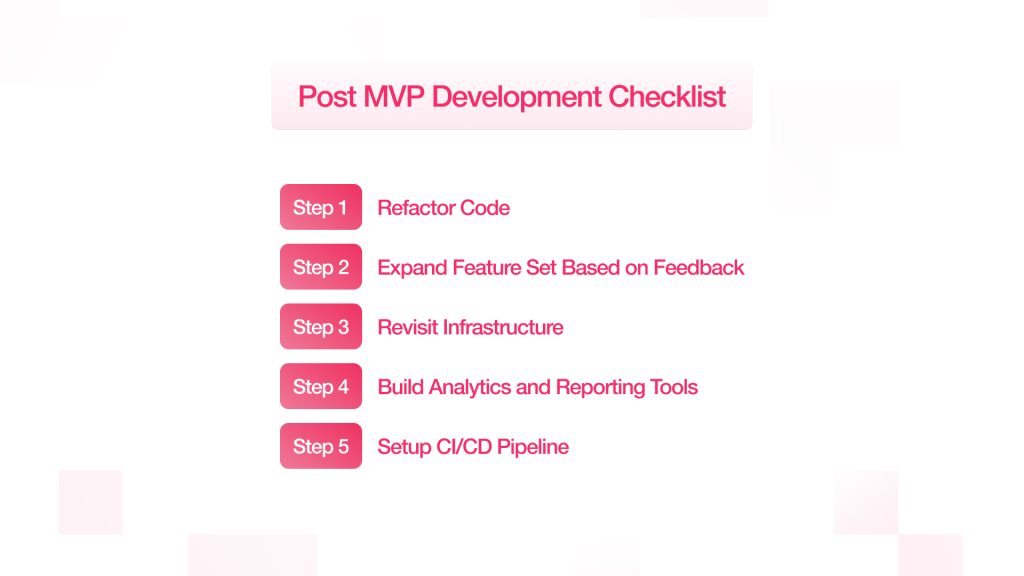
- Refactor Code: Clean up all those technical shortcuts made for the sake of MVP development.
- Expand Feature Set Based on Customer Feedback: Prioritize core features requested by real users, not assumptions.
- Revisit Infrastructure: Basic services should be abandoned to a more scalable level if necessary (e.g., moving away from shared hosting to Kubernetes clusters).
- Build Analytics and Reporting Tools: Get deeper insights from data because this will help determine product direction and justify possible future developments.
- Set up CI/CD: Set up automated testing and deployment to reduce bugs and downtime during releases.
Your product has to become capable of scaling not just in terms of accommodating an increasing number of users but also changing, adding new features without disruption, and maintaining quality and performance at a high level.
Need a Stunning App Development Services?
We Can Help!
Common Mistakes to Avoid
Even when intended to be helpful, MVPs can go very wrong if one is careless. Below are the most common traps to look out for:
- Overcomplicating the MVP: Adding objects will only lead to delays in the launch and make development cost overrun. Keep the prototype focused on core functionality.
- Ignoring Scalability: Some developers just think they can scale their app later. However, if you create an architecture that can scale from day one, you will save yourself massive rework.
- Not Listening to User Feedback: An MVP is all about learning. Ignoring anything that the users tell you really defeats the purpose.
- Skipping Testing: An MVP isn’t a synonym for instability. Functional bugs and unusable MVPs lose real users even before proper feedback is acquired.
Conclusion
Knowing how to build scalable software with as low an investment as you can get it. An MVP has been constructed to strike a balance between simplicity and foresight, thus allowing startups to validate their product ideas while preparing them for the long-term growth success demands.
An MVP, designed well, proves the product concept but also gets the user-to-product interaction in place to prepare for growth: Applying the best software architecture practice, right tooling, user-centric approach, and smart cost management.
 Shopify
Shopify